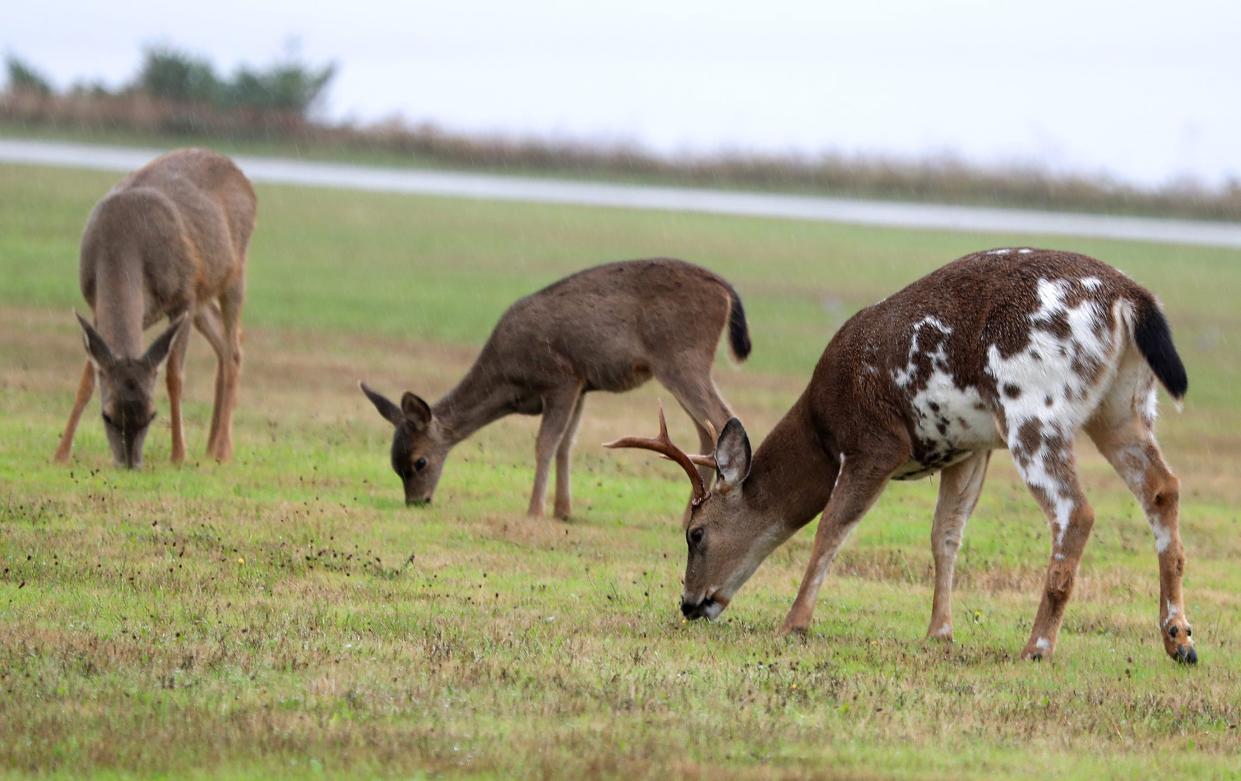Deer with 'rare' genetic mutation photographed in Oregon: See pics here
The piebald deer spotted frolicking in an Oregon field last month makes average look overrated, donning a coat sprinkled with bits of white.
This isn’t your average deer, nor it will ever be due to a genetic anomaly.
Kathleen Verigin documented the “rare” sight on February 19, making her one of only a few people who have seen the speckled creature “in the wild.”

“Very rare Piebald deer roaming with her herd around Hidden Hills, SW of McMinnville,” Verigin wrote on Facebook.
Despite its unique look, Oregon Department of Fish & and Wildlife confirmed Thursday that the piebald deer pictured is not a separate species but rather a “black-tailed deer with a mutation.”
Deer like the one captured by Verigin display a “recessive” gene in action, inheriting the trait from parents who both carry the trait. They can, however, give birth to “normal looking” fawns later in life, according to the National Deer Association.
Verigin told The Oregonian that it was not “unusual to see lots of deers” in the area, but that “this year, however, we were startled by a piebald deer.”
Lifespan of piebald deer is short, tied to genetic mutation
A piebald deer’s lifespan is way shorter than their black-tailder counterpart, rarely making it into adulthood, Michelle Dennehy, a spokesperson for the department said Thursday.
“These deer often don't live long due to their coloration and other factors, including short legs, with fused, arthritic joints, a short rostrum and organ damage,” Dennehy said.
Black-tailed deer and piebald comrades are typically seen in western Oregon from east Coast Range to the Cascade Mountains, hiding during the day in the dense forest and venturing out to feed at dawn and dusk, according to the Oregon Department of Fish & Wildlife.
Grasses, forbs and shrubs keep this deer species and other deer species in the area “healthy,” the department wrote online.
“Some, such as this deer, do survive to adulthood and have a normal appearance, allowing the genetic mutation to continue on,” according to Dennehy.
‘Not many people have seen’ piebald deer in the wild, department of fish and wildlife says
The piebald deer Verigin spotted “looked pretty healthy” despite its obvious genetic limitations, living comfortably in the area over the course of a “few months,” she said.
Verigin also noted that the piebald was not “being treated differently by the other deer” as far as she could tell.
“We're assuming as she's with the herd of does, and no antlers,” she wrote in the comments.
Deer with this genetic mutation may not be as “rare” as let’s say an albino or leucistic can be “as common as one in every 1,000 deer,” according to the National Deer Association. The number observed in a region can vary significantly, depending on the local deer population. Piebald deer may be more common in “some localized regions or islands,” the association wrote.
“Each piebald deer has its own unique coloration, like a fingerprint, which makes no two piebalds exactly alike. In that sense, piebald colorations could be considered the “rarest” since every individual’s pattern is different,” according to the National Deer Association.
Dennehy says they hear about “piebalds every year … but not many people have seen one in the wild.”
The department echoed a similar sentiment in 2016, writing that “every spring and fall we receive numerous reports of these fascinating ghosts of the forest from all around the state.”
“Piebalds are only rare in the sense that they are far outnumbered by deer without the genetic mutation,” she said.
This article originally appeared on USA TODAY: Oregon woman captures 'rare' deer with genetic mutation
